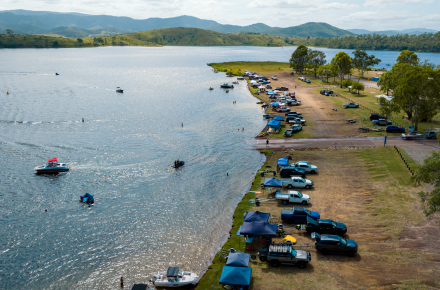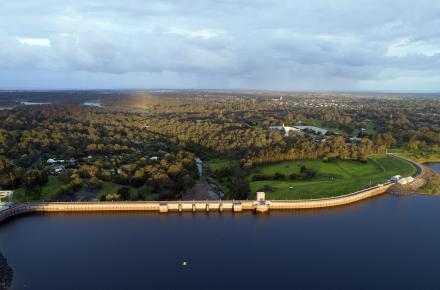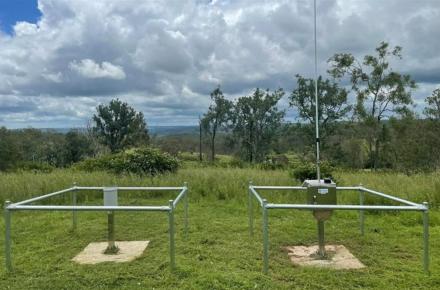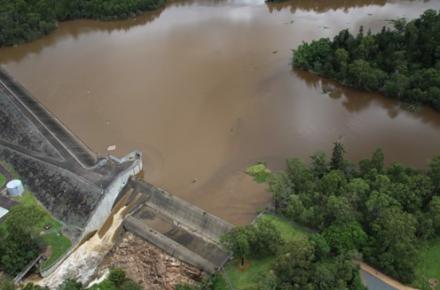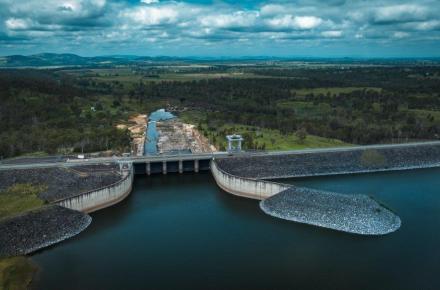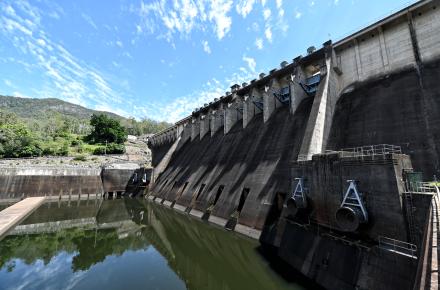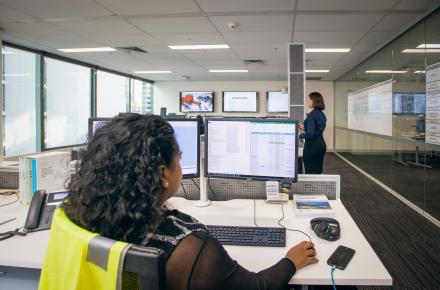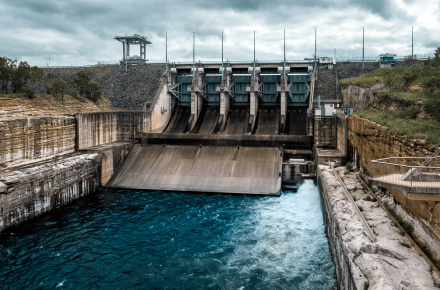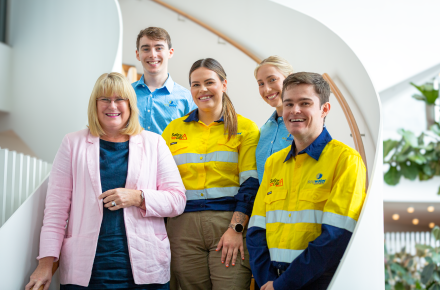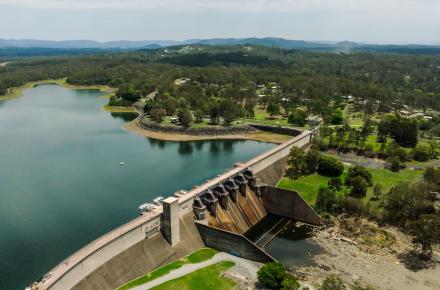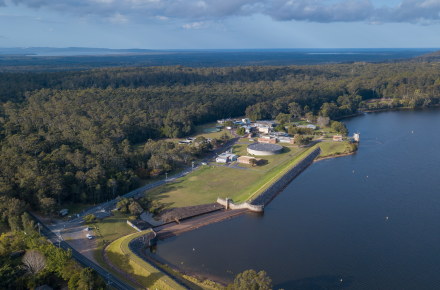However, Wivenhoe Dam, the region’s largest and most important drinking water storages, is 37.3%.
Seqwater Chief Executive Officer Neil Brennan said the SEQ Water Grid had increased to 59% on Thursday, with the majority of rain falling in the coastal catchments.
“On the Gold Coast, Hinze Dam and Little Nerang Dam catchments received more than 470mm of rain, while Sunshine Coast and Noosa dams received 160mm to 230mm,” Mr Brenan said.
“Unfortunately, the heavy rain didn’t fall where it was needed the most, with Wivenhoe Dam receiving 70-80mm of rain fall in the past week and Somerset Dam– which flows into Wivenhoe – receiving 95mm.
“While the rainfall has eased, inflows are continuing into Somerset Dam and Wivenhoe Dam catchments, however, we’re not expecting significant improvement to the combined level of these storages.
Mr Brennan said the SEQ Water Grid was being used to transport treated drinking water from the Gold and Sunshine Coasts – where dams had been topped up – into Brisbane and surrounding areas to take pressure off Wivenhoe.
“The SEQ Water Grid consists of more than 600 kilometres of bulk water supply pipelines and connects the region’s major water treatments plants and water dams as well as the Gold Coast Desalination Plant.
“The availability of The Grid has effectively allowed us to connect our 12 key water supply storages across South East Queensland and provides significant security of supply during times when some storages are healthier than others.”
Out in the Scenic Rim, Moogerah Dam, which had reached a historic low of 12.5% last week, has seen its level rise to about 41%.
Across South East Queensland, a total of 11 dams are currently spilling.
Seqwater Chief Executive Officer Neil Brennan said despite the recent downpour, it was important for communities to continue to be waterwise.
“With the region’s combined water level still under 60%, we remain in our drought response phase and ask residents to remain water conscious, especially as we enter our traditional dry season,” Mr Brennan said.
“This time last year, the SEQ Water Grid was at about 70% capacity, and Wivenhoe was about 53% capacity.
“The last time the SEQ Water Grid was at the level it is at now was only in October last year.”
“Many of Seqwater’s dam catchments are very wet and will see levels continue to rise quickly if we receive further rainfall in the near future.
Seqwater Chief Executive Officer, Neil Brennan said average residential water usage across South East Queensland was 151 litres per person per day last week, just one litre shy of the region’s drought response target of 150 litres per person, per day.
“The rain has topped up rainwater tanks and given lawns and gardens a good drink.”
“This should help all of us reach that 150 litres per person per day target.”
Seqwater will continue to monitor rainfall forecasts and water supply levels. For updates on dam levels, catchment rainfall and water consumption, visit seqwater.com.au/dam-levels

